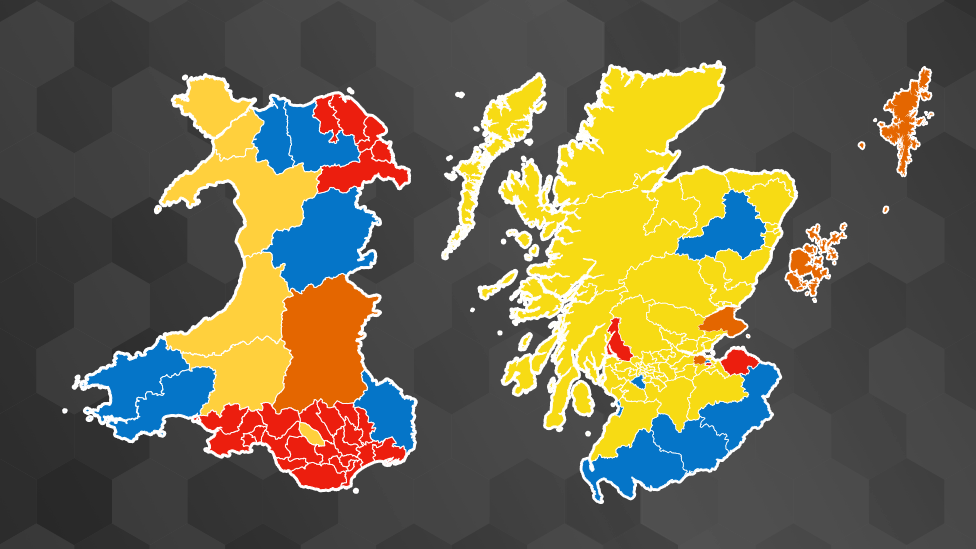London mayor: Results by neighbourhood
- Published
Sadiq Khan became London's new Labour mayor on 7 May. Mr Khan gained 44.2% of first preference votes to Conservative Zac Goldsmith's 35.0%, but how did support for the two men break down at neighbourhood level?
The map below shows how voters in London's wards used their first preference vote for mayor.
In the 630 neighbourhoods mapped, Labour took the majority of the votes in 388. The Conservatives were the strongest party in 242 wards.
Labour and the Conservatives dominated the contest - no other party managed to win on first preferences in any part of London.
Khan or Goldsmith? London mapped by first preference vote share
Your browser does not support this interactive content
Labour increased its support in the north and west of the city, compared with the 2012 election, and managed to take a larger share of the vote than the Conservatives in the City of London.
Khan's highest share of the vote - 76.9% - was in Little Ilford, Newham. His lowest levels of support were in Knightsbridge and Belgravia at 12.6% - which coincidentally saw the highest share for Zac Goldsmith at 76.0%.
To see how the mayoral candidates for the Conservatives, Greens, UKIP and the Lib Dems fared use the dropdown menu below.
Labour's strongholds: Vote share, by first preference mayoral vote
Your browser does not support this interactive content
Mr Goldsmith had the largest share of the vote in west London, as well as a large concentration of support in the north-west and the south-east. However, he struggled to do as well as Labour in much of central London.
Conservative strongholds: Vote share, by first preference mayoral vote
Your browser does not support this interactive content
Where was turnout highest?
Your browser does not support this interactive content
Overall voter turnout was higher at this election than in 2012, with 45.3% of people turning out to vote. There were just two neighbourhoods that bucked the trend, both in Lambeth: Bishop's ward, where turnout fell by 4.9 percentage points, and Coldharbour, where it slipped by 1.6.
People turned out to vote in greater numbers in those parts of London that tended to favour the Conservative candidate: the northern and southern edges of the city.
At 62.0% and 59.3%, turnout was highest of all in East Sheen and Kew - two wards where Mr Goldsmith thrashed Mr Khan.
But the ward with the third-highest turnout in London, Dulwich Village, was a better bellwether for the overall result: Mr Khan overturned a majority for Boris Johnson at the last election in 2012.
The ward with the lowest proportion of people voting was Fieldway in Croydon, at 26.6%. This was up on 23.7% in 2012.
Data from London Elects, external
- Published9 May 2016
